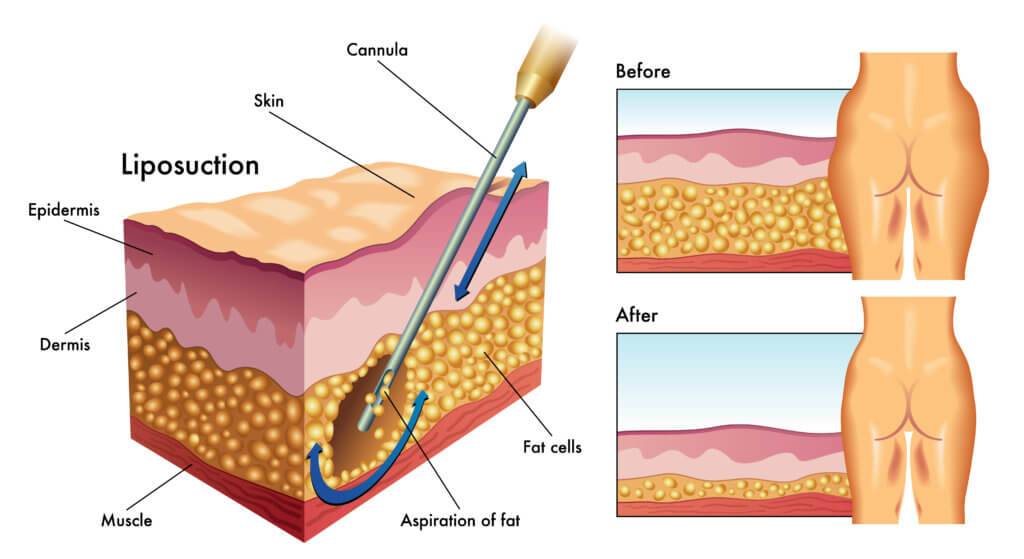Liposuction is considered an invasive surgery that removes stubborn, unwanted fat that you haven’t been able to work off through diet or exercise. The invasive distinction stems from the use of general anesthesia, which makes patients completely unconscious during the procedure.
Traditional, fully invasive liposuction techniques involve a tool called a cannula, which breaks down and sucks the fat out of areas containing such excess flab. Recovery from this type of surgery can be quite extensive; the greater the amount of fat removed, the longer the expected recovery.
Because many patients have concerns about the risks associated with general anesthesia, researchers developed several new liposuction techniques that can be performed under local anesthesia. These minimally invasive, less risky procedures can be done while the patient remains awake. Compared to traditional liposuction, however, smaller quantities of fat can be removed.
The most well-known minimally invasive, liposuction technique uses laser energy to melt fat internally before its extraction. Not to be confused with noninvasive laser liposuction, this procedure still involves incisions and the insertion of tools into the targeted body part.
This article will review the five most popular types of internal laser liposuction, exploring how their techniques and other vital elements differ.
TriSculpt:
Performed by a company called Sono Bello, TriSculpt laser liposuction procedures emit low-energy laser waves from a small fiber inserted into the area with excess fat. Sono Bello offers two variations of laser lipo depending on the amount of fat to be removed and body part slated for treatment.
AirSculpt:
This procedure has become more well-known due to its popularity in Hollywood. AirSculpt reduces fat without incisions or stitches, allowing the patient to leave the procedure scar-free. AirSculpt doctors use an air pressure tool to create the small hole through which the entire procedure will be done. This facet means that only a tiny scar, the size of a freckle, will remain.
SmartLipo:
Promoted as a safer alternative to tumescent liposuction, SmartLipo works with reduced recovery time as its primary benefit. Laser energy is used to melt fat cells, which are locally removed and drained through cannulas. Once again, this procedure does not require general anesthesia. Furthermore, SmartLipo also claims its procedures tone the body and tighten the skin. Three different wavelengths of laser can be used to achieve these various purposes.

CoolLipo:
The cannula used during CoolLipo procedures emits pulses of laser energy at a higher wavelength than the other methods explored here. Instead of a wavelength of 1064 nm, CoolLipo emits energy at 1320 nm.
Vaser:
Technically not an example of laser liposuction, Vaser instead uses ultrasound energy to break down or “melt” fat cells. This process gives the patient the option of sculpting the body while removing excess flab. If necessary, a combination of ultrasound and laser techniques can be incorporated during this process.
